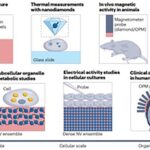Get an understanding of how to select sensors and microcontrollers for your IoT product, with an emphasis on circuit design to optimize performance.
Sensors in IoT devices collect data from the environment, after which the data can be processed and analyzed to make intelligent decisions. The quality of your sensors and how well you integrate them into the overall architecture play an important role in an IoT system’s effectiveness.
The IoT sensor landscape
IoT systems employ a wide array of sensors, each serving a specific purpose. These include:
- Motion sensors for detecting movement and orientation.
- Visual sensors such as cameras and other imaging devices (Figure 1).
- Temperature sensors that monitor the environment (Figure 2).
- Pressure sensors that monitor fluid and gas pressure.
- Speed sensors that track velocity in automotive and industrial applications.

Each sensor type plays a unique role in IoT applications. For instance, motion sensors are crucial in-home security systems, while temperature sensors are indispensable in smart HVAC systems and industrial process monitoring. The key is to understand the specific needs of your IoT applications and choose sensors that align with those requirements.
Criteria for sensor selection
Selecting the right sensor for an IoT application is a multi-faceted decision. For starters, the sensor must be compatible with a device’s hardware and software architecture. Such compatibility includes voltage levels, communication protocols, and physical dimensions. For battery-operated or remote IoT devices, energy efficiency is a critical factor. Sensors with low-power modes and quick wake-up times are often preferred.

A sensor’s accuracy and resolution can significantly impact the quality of collected data. High-precision sensors are essential for applications where small measurement errors can lead to significant consequences, such as in medical devices.
The three factors — compatibility, energy efficiency, and precision — are interlinked. A sensor may be highly accurate but consumes too much power, making it unsuitable for battery-operated devices. Similarly, a low-power sensor may lack the precision needed for certain applications. Therefore, a balanced approach is essential in sensor selection, keeping in mind the specific requirements of the IoT device’s intended application.
Read the complete article, Select and integrate sensors into IoT devices at Sensor Tips.


Leave a Reply